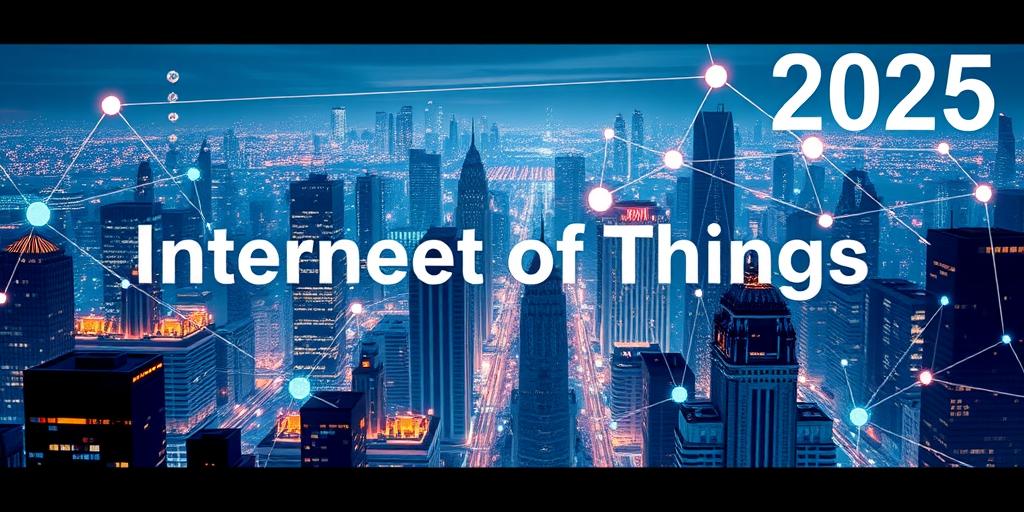The Internet of Things (IoT) Ecosystem in 2025: Billions Connected
The Internet of Things (IoT) is rapidly transforming the world around us. By 2025, the IoT ecosystem is projected to encompass billions of interconnected devices, creating a vast network of data exchange and automation. This post will explore the key trends, technologies, and potential impacts shaping the IoT landscape in 2025.
Growth and Projections
Industry analysts predict exponential growth in the number of IoT devices. Estimates vary, but most forecasts suggest that there will be well over 50 billion IoT devices deployed globally by 2025. This massive expansion is driven by:
- Decreasing Hardware Costs: The price of sensors, microcontrollers, and communication modules continues to decline, making IoT deployments more affordable.
- Improved Connectivity: The rollout of 5G networks and advancements in other wireless technologies are enabling faster, more reliable data transmission.
- Expanding Use Cases: Businesses and consumers are discovering new and innovative applications for IoT across various sectors.
Key Technologies
Several core technologies are essential to the functioning and advancement of the IoT ecosystem:
- 5G and Wireless Communication: 5G provides the high bandwidth and low latency required for many IoT applications, especially those involving real-time data processing and control. Wi-Fi 6 and other wireless standards also play a crucial role.
- Edge Computing: Processing data closer to the source (i.e., at the ‘edge’ of the network) reduces latency and bandwidth requirements, enabling faster response times and improved security.
- Artificial Intelligence (AI) and Machine Learning (ML): AI and ML algorithms analyze the vast amounts of data generated by IoT devices, enabling predictive maintenance, automated decision-making, and personalized experiences.
- Cloud Computing: Cloud platforms provide the infrastructure and services needed to store, manage, and process IoT data at scale.
- Blockchain: Blockchain technology enhances the security and transparency of IoT networks, ensuring data integrity and preventing unauthorized access.
Impact Across Industries
The proliferation of IoT is impacting numerous industries, including:
- Manufacturing: IoT enables smart factories with connected machines, predictive maintenance, and real-time monitoring of production processes.
- Healthcare: Remote patient monitoring, wearable health devices, and connected medical equipment improve patient outcomes and reduce healthcare costs.
- Transportation: Connected vehicles, smart traffic management systems, and logistics optimization enhance safety, efficiency, and sustainability.
- Agriculture: Smart farming techniques using IoT sensors and data analytics optimize crop yields, reduce water consumption, and minimize environmental impact.
- Smart Homes and Cities: IoT devices automate home functions, improve energy efficiency, and enhance the quality of life in urban environments.
Challenges and Considerations
Despite its immense potential, the IoT ecosystem faces several challenges:
- Security: The interconnected nature of IoT devices makes them vulnerable to cyberattacks. Robust security measures are essential to protect sensitive data and prevent unauthorized access.
- Privacy: The collection and use of personal data by IoT devices raise privacy concerns. Clear policies and regulations are needed to safeguard individual rights.
- Interoperability: Lack of standardization can hinder the integration of devices from different manufacturers. Efforts to promote interoperability are crucial for seamless operation.
- Scalability: Managing and processing data from billions of devices requires scalable infrastructure and efficient data management techniques.
Conclusion
The Internet of Things is poised for continued growth and expansion in the coming years. By 2025, the IoT ecosystem will be an integral part of our daily lives, transforming industries, and creating new opportunities. Addressing the challenges related to security, privacy, and interoperability will be essential to realizing the full potential of IoT and ensuring a connected future that benefits everyone.
